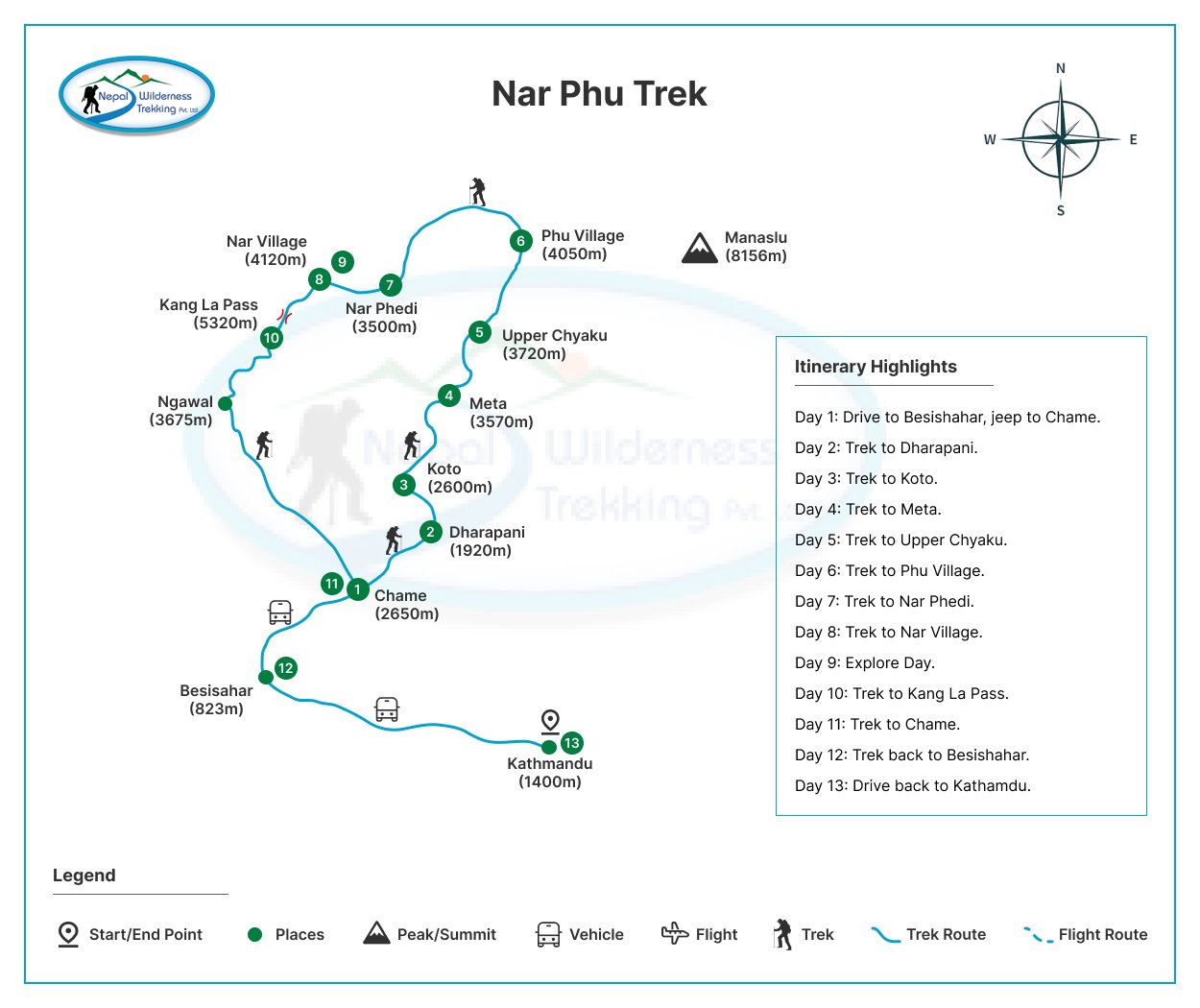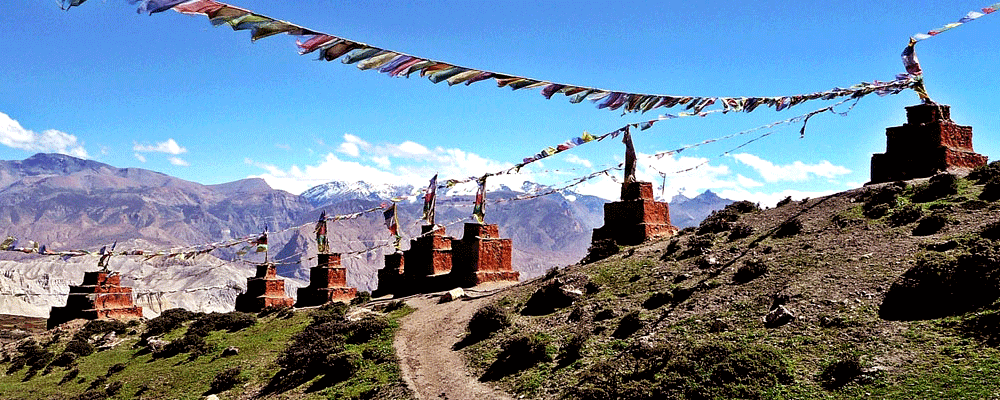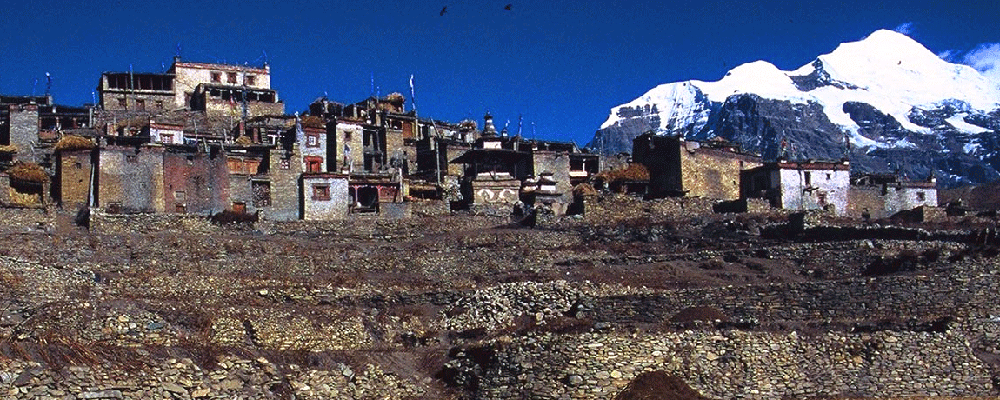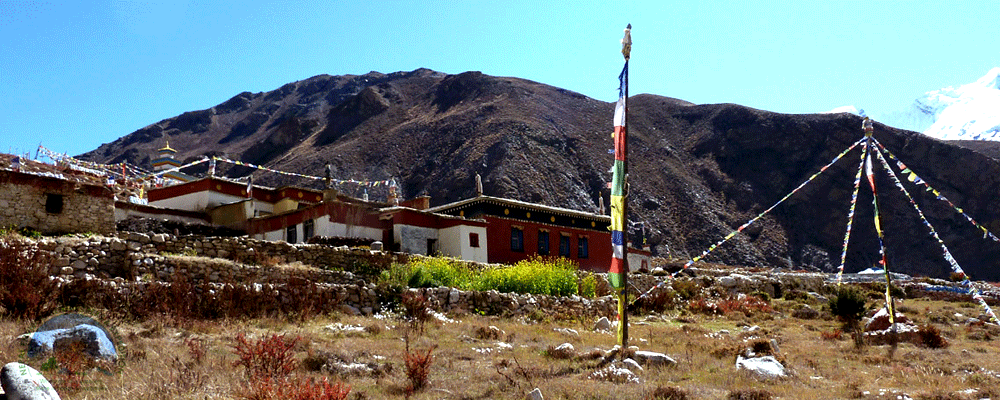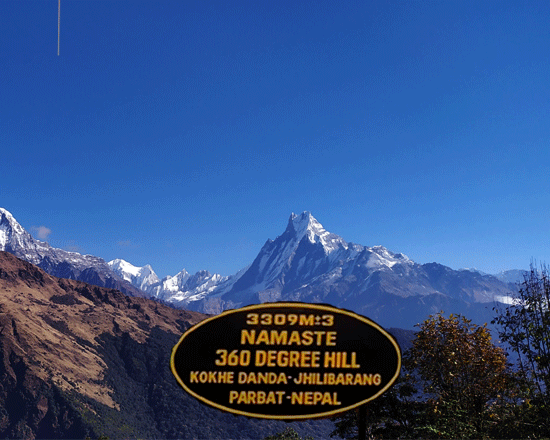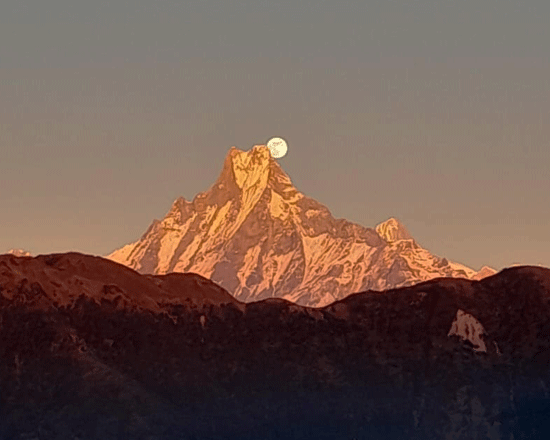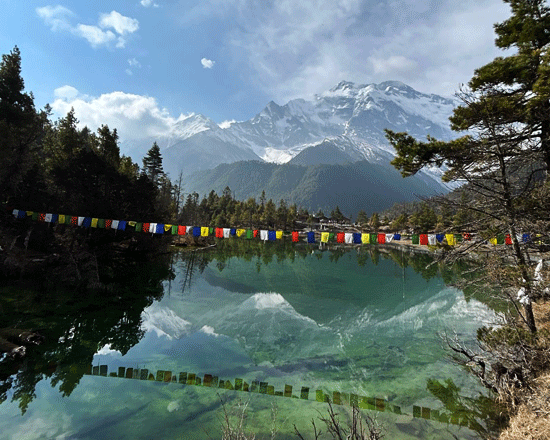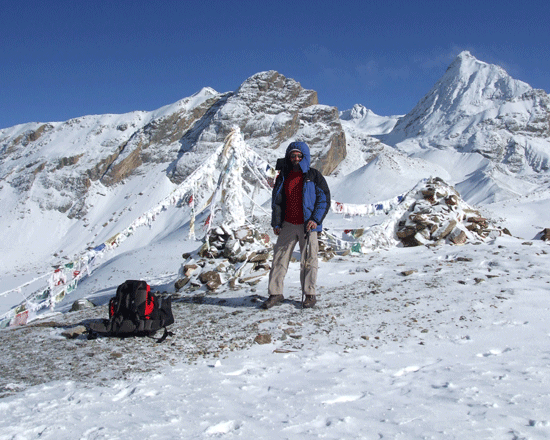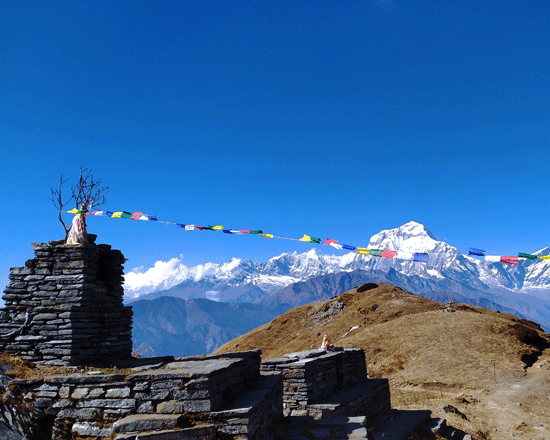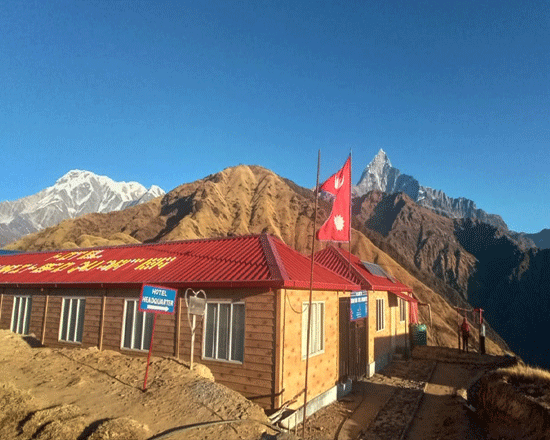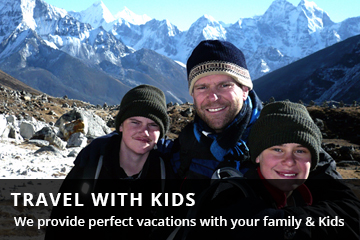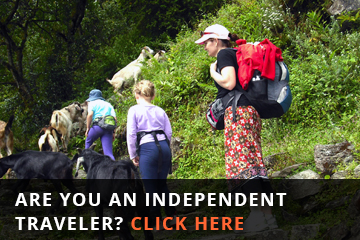Nar Phu Valley Trek
Nar Phu Valley Trek
Annapurna RegionTrip Facts
Since the terrain can be hard and the days long, hikers on these treks should be in good physical condition and have some previous mountain walking experience. Steep climbing may be involved, although it is never necessary to use ropes. Treks at this level can he arranged for periods of 16 to 21 days. Typically, a gradual ascent through a green river valley will lead you up to a number of high passes, where you will reach the altitude of 5416m. Often times, you will get a close insight into the Tibetan culture. Participants should expect to trek above 5416m/17872ft.
Hold Your Guide : Suk Bahadur Ghale100%
Overview
Nar Phu Valley Trek 13-Day Itinerary Package
The Nar Phu Valley Trek is a hidden gem in the Annapurna region, providing adventurers with a unique and unforgettable experience in the remote corners of the Himalayas. The relatively new trekking route unveils breathtaking landscapes, off the beaten path, allowing you to explore less-traveled areas teeming with natural beauty and cultural richness. Be prepared for an extraordinary adventure that will leave you with memories to cherish.
Unveiling the Enchantment: Nar and Phu
Nestled on the Tibetan border, Nar and Phu are two ancient villages amidst the breathtaking Annapurna Himalayas. The valley boasts lush forests and high-altitude grazing settlements, showcasing an array of diverse flora and fauna. As one of Nepal’s most beautiful and untouched regions, it promises to captivate your senses. Trekkers also arrive in Phu village via the Terila Pass and Saribung Pass, adding to the allure of this remote and enchanting destination.
A Journey of Contrasts
As you embark on this incredible Nar Phu trek, you’ll witness the contrasting lifestyles of the Khampas – Tibetan refugees residing in Nar and Phu. These villages are not only geographically distinct but also boast unique cultural identities. Marvel at the glory of Chortens and observe herds of rare blue sheep, adding a touch of wilderness to your expedition.
Conquer the Heights
The Nar Phu Trek offers an exciting and challenging journey for adventure seekers. Surrounded by dramatic peaks and snow-capped summits, this isolated region is a sanctuary of natural beauty. Your heart will race as you conquer the high alpine valleys above Phu, with the option to venture to the Himlung base camp for those seeking even greater thrills. Crossing the Kang La pass at 5300 meters will leave you with an unforgetable sense of accomplishment.
Rich Tibetan Culture
The Nar Phu trek is a treasure trove of ancient Buddhist monasteries, some dating back over a thousand years. Immerse yourself in the spiritual and social activities centered around these revered monastic sites. Witness the locals donning traditional woolen chubas and intricate Topi hats, showcasing their distinct cultural identity. Throughout the year, vibrant festivals like the Mani Rimdu festival breathe life into the valley, offering a mesmerizing glimpse into their rich traditions.
Nar Phu trek distance
The Nar Phu trek is a stunning and less-traveled route in the Annapurna region of Nepal. The distance of the trek can vary depending on the specific itinerary chosen and any side trips taken along the way. Typically, the Nar Phu Valley trek covers around 75-80 kilometers (around 47-50 miles) in total, taking about 10-12 days to complete. However, this can vary depending on factors such as starting point, hiking speed, and side excursions.
Nar Phu trek Exploring Without a Guide?
The Nar Phu trek cannot be done without a guide due to the restricted area’s status in Nepal. You must obtain permits for accessing Nar Phu Valley through licensed guide from authorized trekking agencies. Attempting the trek independently violates the regulations governing restricted regions. Guides ensure compliance with permit requirements, provide navigation assistance, and enhance overall safety. Trekking with a guide not only ensures adherence to regulations but also improves the trekking experience with local insights and support.
Choose Your Path: Tailored for You
Whether you’re a seasoned trekker or a first-time adventurer our site has only 13 days, however, Nar phu trek itineraries cater to your preferences and time frame. Our experienced Sherpa guide team and porters are committed to promoting rural harmony in the remote villages along the northern shore of the Annapurna region. English and local language-speaking guides ensure that every step of your journey is enriched with cultural insights.
Experience the Nar Phu Trek Difference
Experience the unique charm of the Nar Phu Valley trek with Nepal Wilderness Trekking Pvt. Ltd. As a local company, we take pride in offering competitive rates while ensuring your utmost satisfaction. Moreover, by choosing us, you not only embark on an unforgettable journey but also contribute directly to the local community, thereby making a meaningful impact on their livelihoods. Additionally, our deep local knowledge significantly enhances your adventure by providing valuable insights and creating truly unforgettable experiences. As a result, when you discover the beauty of the Nar Phu Valley with us, you not only immerse yourself in its breathtaking landscapes but also leave a lasting imprint on your heart and on the lives of the people you encounter along the way.
Nar Phu Trek Price
The price for the Nar Phu trek can vary significantly due to several factors. Firstly, the duration of the trek plays a crucial role in determining the overall cost. Secondly, the services included, such as a guide, porter, accommodation, meals, and transportation, can also greatly influence the pricing. Furthermore, the trekking agency you choose may offer different packages and rates based on their reputation and the level of service they provide. Therefore, it is important to carefully consider these factors when planning your budget for the trek. On average, trekkers can expect to budget anywhere from USD 1200 to USD 1500 per person for the Nar Phu trek, excluding international flights and personal expenses. Choosing a local trekking agency like Nepal Wilderness Trekking Pvt. Ltd. can often provide competitive rates without compromising on quality.
Best Time for Nar Phu Valley Trek
The Nar Phu Valley Trek is open year-round. The month of March to May and September to November are ideal for most trekkers. Adventurous souls can also explore the valley during the monsoon season (June to August). Experience the charm of this untouched landscape, though access to Besisahar may be affected by mud and landslides during the monsoon.
A Journey of Challenges and Rewards
The Nar Phu Valley Trek is a journey of challenges and rewards, allowing you to discover hidden valley, meet hospitable locals, and witness awe-inspiring landscapes. This is an experience that will leave an indelible mark on your heart and soul.
Contact Us: Start Your Nar Phu Valley Trip Adventure Today
Permits costs
- To access the Nar Phu Valley, you will need Nar Phu Valley Restricted Area (NRA) Permits, priced at U$D100 per week per person. These permits are specifically required due to the restricted nature of the area.
- In addition to the NRA permits, you will also need Annapurna Conservation Area Project (ACAP) permits, which cost U$D30 per person. These permits contribute to the conservation efforts in the Annapurna region, ensuring the preservation of its natural resources.
- You must also obtain Trekking Information Management System (TIMS) Permits for the trek, which are priced at USD 20 per person.
These permits help in managing trekking activities and ensuring the safety of trekkers.
Detail Itinerary
Cost Included
- Nar and Phu Restricted Area (NRA) Permits.
- Annapurna Conservation Area Permit.
- Trekker's Information Management System (TIMS) Card.
- One English-speaking experienced guide and required porters (1 porter for every 2 pax; note that if a single pax, then additional cost for the porter).
- Local bus from Kathmandu to Besi Sahar and sharing jeep from Besi Sahar to Chamje.
- Sharing jeep from Chame to Besi Sahar and public bus from Besi Sahar to Kathmandu.
- All meals (breakfast, lunch, and dinner).
- Seasonal fresh fruits are provided after dinner.
- Lodge accommodation during the trek.
- Staff, equipment, meals, salary, insurance, etc.
- First aid kit.
- Kitbag for storing your belongings.
- Sleeping bag for a comfortable night's sleep during the trek in temperatures as low as minus 25 degrees.
- Necessary paperwork, including all government and local taxes.
- A certificate of appreciation from Nepal Wilderness Trekking upon the successful completion of the trek.
Cost Excluded
- Airfare for international flights.
- Upon arrival at Tribhuvan International Airport, Nepal, entry visa fees vary by duration (15 days - $25-30, 30 days - $40, 90 days - $100).
- Accommodations and meals in Kathmandu and Pokhara before and after our journey.
- Personal equipment is suitable for high and cold temperatures.
- Emergency high-altitude rescue and evacuation are covered by travel insurance.
- Exclusion of all beverages, soft and caffeinated drinks such as coke, beer, drinking water/mineral water, dessert, etc. Also, hot shower and laundry expenses.
- Tips for the guide and porter.
- Excluded are all costs and expenses not listed under "cost includes."
- Inclusion of costs or delays beyond the control of the management, such as landslides, weather conditions, itinerary modifications due to safety concerns, illness, changes in government policies, strikes, etc.
| Trip Dates | Trip Price | Confirmed Pax | Trip Status | |
|---|---|---|---|---|
| Fixed Departures will be added soon! | ||||
Trip Map
